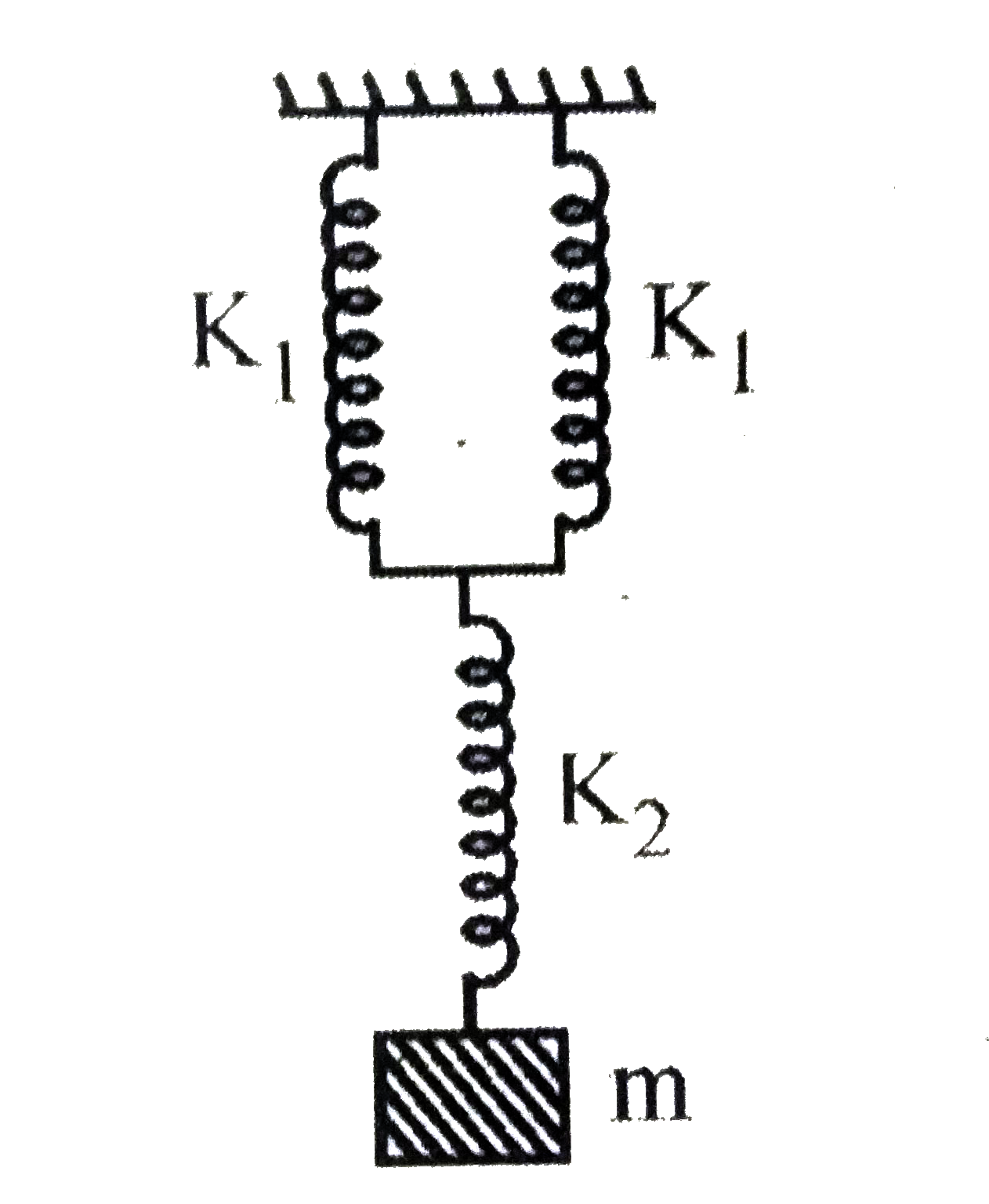Define spring constant of spring.
Step-by-Step Solution:
1. Understanding the Spring Constant:
The spring constant, denoted as k, is a measure of the stiffness of a spring. It quantifies how much force is needed to stretch or compress the spring by a certain distance.
2. Hooke's Law:
According to Hooke's Law, the restoring force F exerted by a spring is directly proportional to the displacement x from its equilibrium position. This relationship can be expressed mathematically as:
F=−kx
Here, F is the restoring force, k is the spring constant, and x is the displacement from the equilibrium position.
3. Direction of Force:
The negative sign in Hooke's Law indicates that the restoring force acts in the opposite direction of the displacement. If the spring is stretched (positive displacement), the force acts to pull it back (negative direction), and vice versa.
4. Defining the Spring Constant:
The spring constant k can be defined as:
k=−Fx
This means that for a unit displacement (when x=1), the spring constant k is equal to the magnitude of the restoring force.
5. Physical Interpretation:
A larger value of k indicates a stiffer spring, which requires more force to produce the same amount of displacement compared to a spring with a smaller k. Conversely, a smaller k indicates a more flexible spring.
6. Conclusion:
In summary, the spring constant is a measure of how stiff a spring is, and it relates the force exerted by the spring to the displacement from its equilibrium position.
The spring constant, denoted as k, is a measure of the stiffness of a spring. It quantifies how much force is needed to stretch or compress the spring by a certain distance.
According to Hooke's Law, the restoring force F exerted by a spring is directly proportional to the displacement x from its equilibrium position. This relationship can be expressed mathematically as:
F=−kx
Here, F is the restoring force, k is the spring constant, and x is the displacement from the equilibrium position.
The negative sign in Hooke's Law indicates that the restoring force acts in the opposite direction of the displacement. If the spring is stretched (positive displacement), the force acts to pull it back (negative direction), and vice versa.
The spring constant k can be defined as:
k=−Fx
This means that for a unit displacement (when x=1), the spring constant k is equal to the magnitude of the restoring force.
A larger value of k indicates a stiffer spring, which requires more force to produce the same amount of displacement compared to a spring with a smaller k. Conversely, a smaller k indicates a more flexible spring.
In summary, the spring constant is a measure of how stiff a spring is, and it relates the force exerted by the spring to the displacement from its equilibrium position.
Topper's Solved these Questions
- BOOK - CBSE COMPLEMENTARY MATERIALCHAPTER - WORK, ENERGY AND POWEREXERCISE - SHORT ANSWER QUESTIONS25videos
WORK, ENERGY AND POWER
- BOOK - CBSE COMPLEMENTARY MATERIALCHAPTER - WORK, ENERGY AND POWEREXERCISE - NUMERICALS11videos
WORK, ENERGY AND POWER
- BOOK - CBSE COMPLEMENTARY MATERIALCHAPTER - THERMODYNAMICS EXERCISE - MULTIPLE CHOICE QUESTIONS (MCQs)20videos
THERMODYNAMICS
Similar Questions
Knowledge Check
- Question 1 - Select One or More
The spring constant of spring A is twice the spring constant of spring B. Each of the spring is cut into two pieces. First piece of spring A is (4/5) of the total length. Second piece of spring B is (5/6) of its total length. Both springs are of equal lengh initially :
Athe ratio of force constant of first piece of spring B to the first piece of spring A is (12/5)Bthe ratio of force constant of first piece of spring B to the first piece of spring A is 2Cthe ratio of force constant of second piece of spring A to the first piece of spring B is 5/3Dthe ratio of force constant of second piece of spring A to the first piece of spring B is 7/5.
A block of mass m moving at a speed v compresses a spring throgh a distance x before its speed is halved. Find the spring constant of the spring.
View SolutionA spring mass system has time period of 2 second. What should be the spring constant of spring if the mass of the block is 10grams ?
View SolutionA spring mass system has time period of 2 second. What should be the spring constant of spring if the mass of the block is 10grams ?
View SolutionThe spring constant of a spring depends on its
View SolutionWhat will be the spring constant k of a spring if spring is divided in n equal parts?
View SolutionWhat will be the spring constant k of a. spring if length of the spring is made n times?
View SolutionWhat will be the equivalent spring constant of the spring system shown in the figure ?
 View Solution
View Solution

